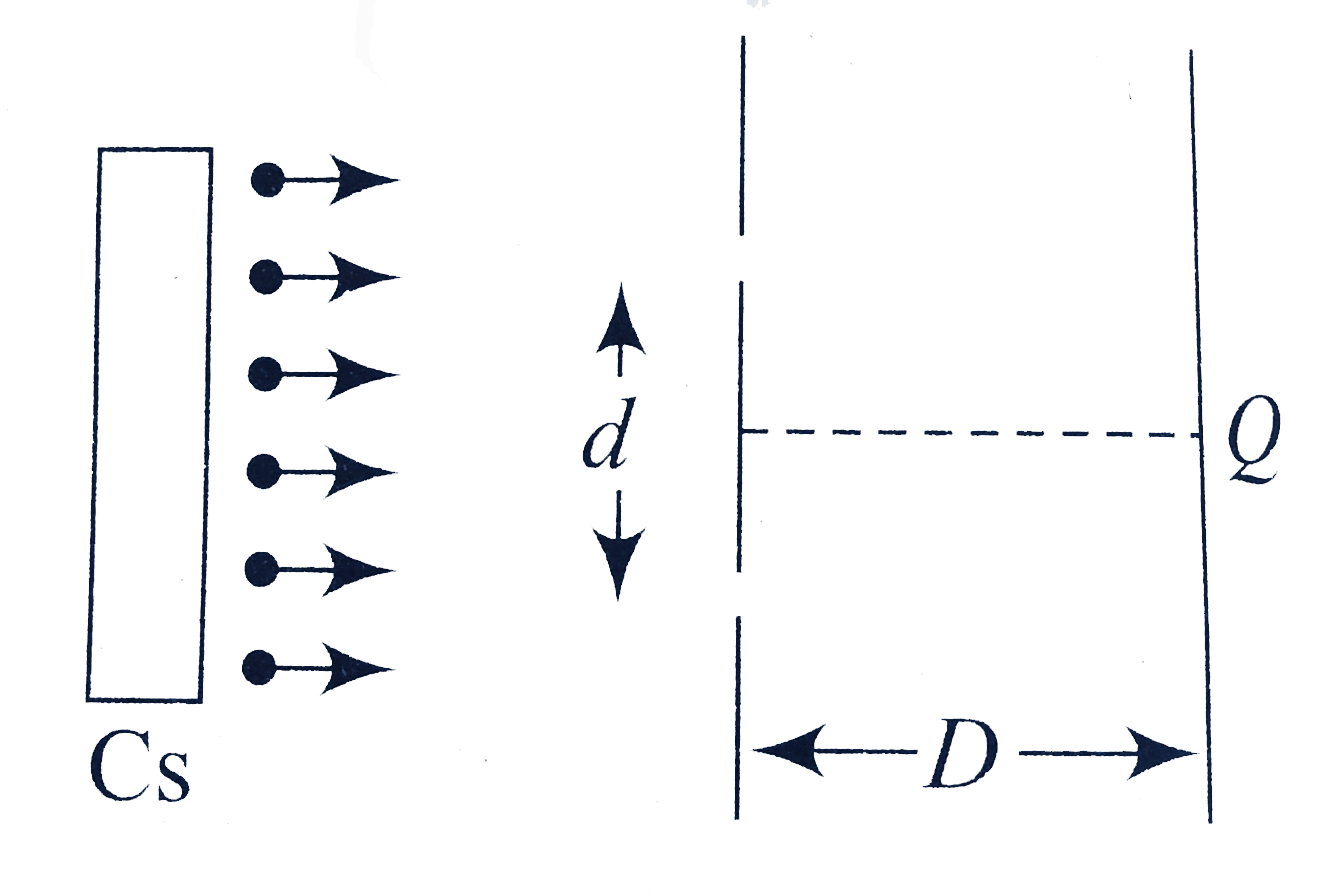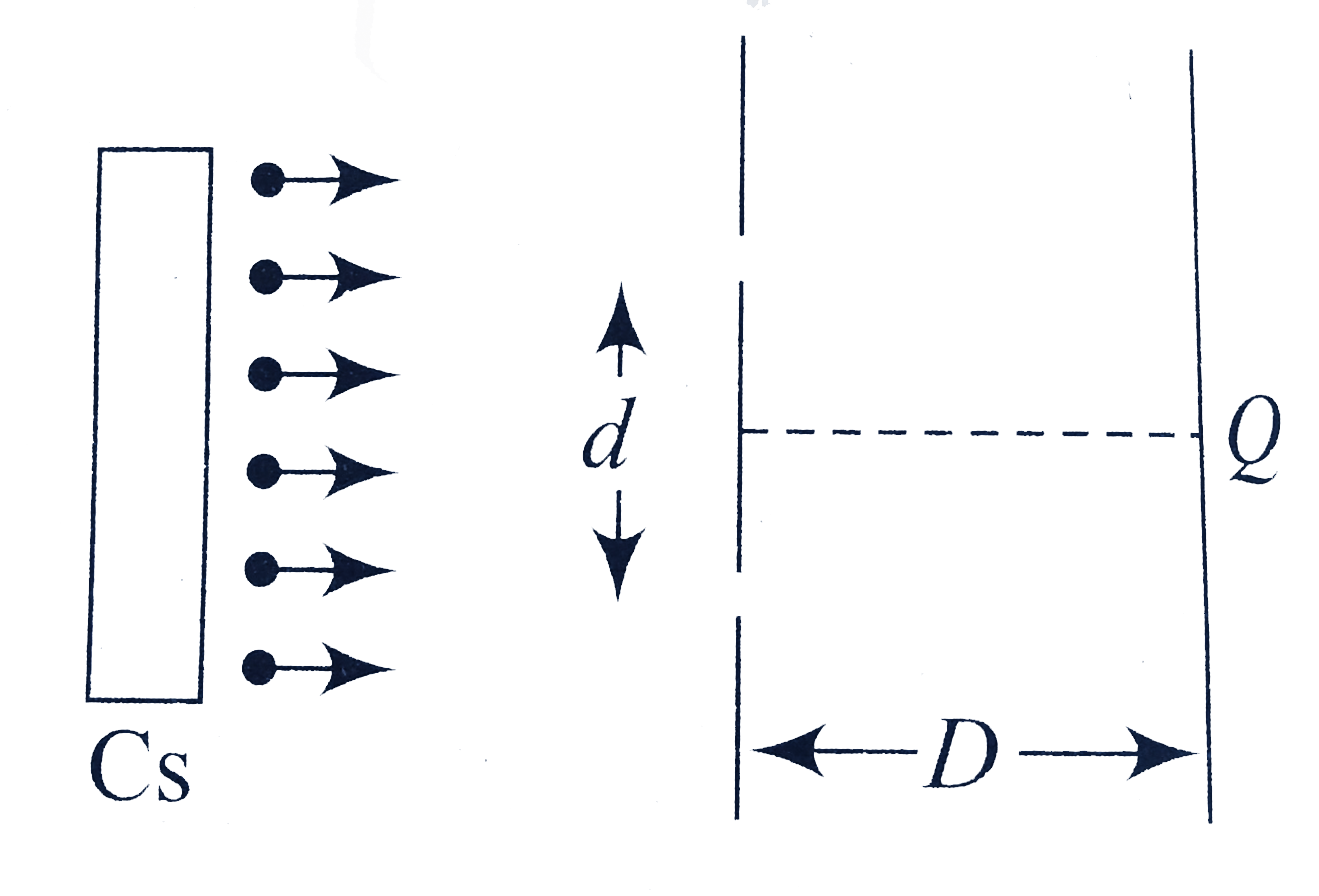
A Cs plate is irradiated with a light of wavelength , being the work function of the plate, h Plank's constant, and c the velocity of light in vacuum. Assume all the photoelectron are moving perpendicular to the plate toward a YDSE setup when accelerated through a potential difference V. Take charge on a proton and moss of an electron . Read the paragraph carefully and answer the following question:The fringe width due to the electron beam is
none of these
Step by step video & image solution for A Cs plate is irradiated with a light of wavelength lamda=(hc)/(phi),phi being the work function of the plate, h Plank's constant, and c the velocity of light in vacuum. Assume all the photoelectron are moving perpendicular to the plate toward a YDSE setup when accelerated through a potential difference V. Take charge on a proton =e and moss of an electron =m. Read the paragraph carefully and answer the following question:The fringe width due to the electron beam is by Physics experts to help you in doubts & scoring excellent marks in Class 12 exams.
Topper's Solved these Questions
- BOOK - FIITJEECHAPTER - GMP ASSESMENTEXERCISE - Numerical Based61videos
GMP ASSESMENT
- BOOK - FIITJEECHAPTER - GMP ASSESMENTEXERCISE - Multiple Question58videos
GMP ASSESMENT
- BOOK - FIITJEECHAPTER - GENERAL PHYSICSEXERCISE - MATRIX MATCH TYPE3videos
GENERAL PHYSICS
- BOOK - FIITJEECHAPTER - GRAVITATIONEXERCISE - Numerical based Question2videos
GRAVITATION
Similar Questions
The mass of an electron is m, charge is e and it is accelerated form rest through a potential difference of V volts. The velocity acquired by electron will be :
View SolutionIn an electron gun, electron are accelerated through a potential difference of V volt. Taking electronic charge and mass to be respectively 'e' and 'm', the maximum velocity attained by them is
View Solution
Knowledge Check
- Question 1 - Select One

A Cs plate is irradiated with a light of wavelength λ=hcϕ,ϕ being the work function of the plate, h Plank's constant, and c the velocity of light in vacuum. Assume all the photoelectron are moving perpendicular to the plate toward a YDSE setup when accelerated through a potential difference V. Take charge on a proton =e and moss of an electron =m. Read the paragraph carefully and answer the following question:
Q. Instead of moving perpendicular to the plate, if the electrons were moving randomly, then the central maximum would shiftAupwardBdownwardCno shiftDno fringes will be formed - Question 2 - Select One

A Cs plate is irradiated with a light of wavelength λ=hcϕ,ϕ being the work function of the plate, h Plank's constant, and c the velocity of light in vacuum. Assume all the photoelectron are moving perpendicular to the plate toward a YDSE setup when accelerated through a potential difference V. Take charge on a proton =e and moss of an electron =m. Read the paragraph carefully and answer the following question:
Q. If the wavelength of light used in photoemission is less that λ, then the fringe width willAincreaseBdecreaseCremain sameDcannot be dicided - Question 3 - Select One
An electron of mass m and charge e is accelerated from rest through a potential difference V in vacuum. The final speed of the electron will be
AV√e/mB√eV/mC√2eV/mD2eV/m
An electron and proton are accelerated through same potential, then λe/λp will be
View SolutionThe mass of an electron is m, charge is e and it is accelerated from rest through a potential difference of V volts. The velocity acquired by electron will be
View SolutionA proton when accelerated through a potential difference of V volt has a wavelength λ associated with it. An alpha-particle in order to have the same λ must be accelerated through a potential difference of
View SolutionIf the work function of a metal is 'ϕ' and the frequency of the incident light is 'v', there is no emission of photoelectron if
View SolutionA stream of electrons from a heated filament was passed between two charged plates kept at a potential difference V esu. If c and m are charge and mass of an electron repectively, then the value of h/λ (where λ is wavelength associated with electron wave) is given by :
View Solution
